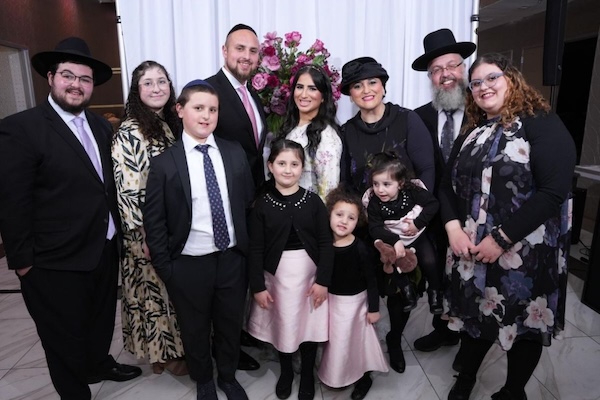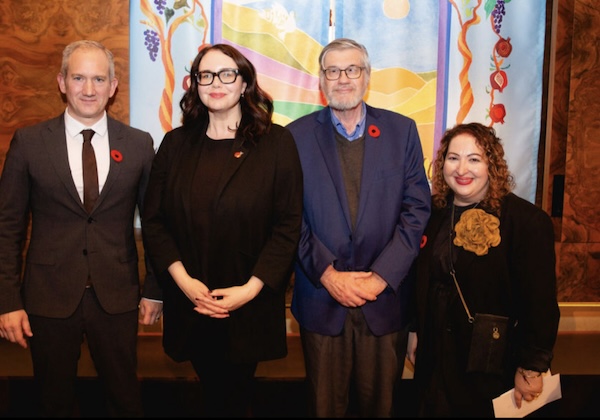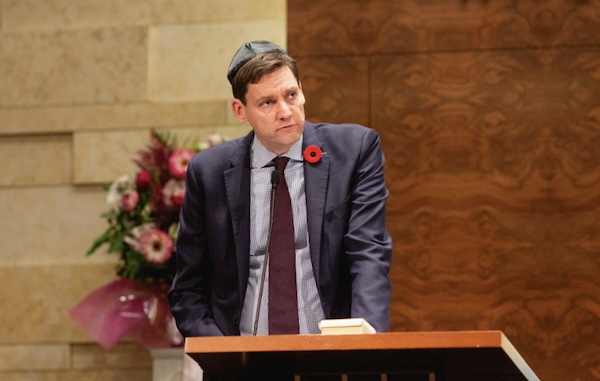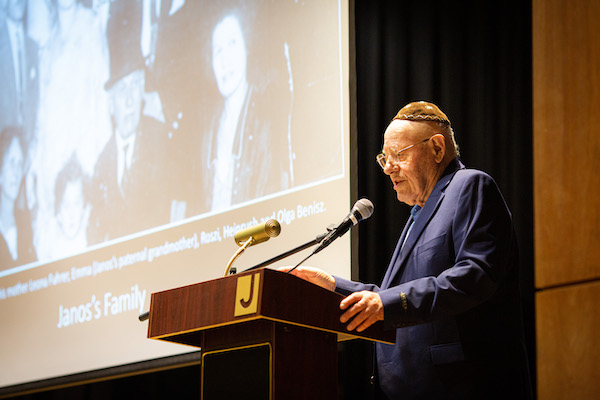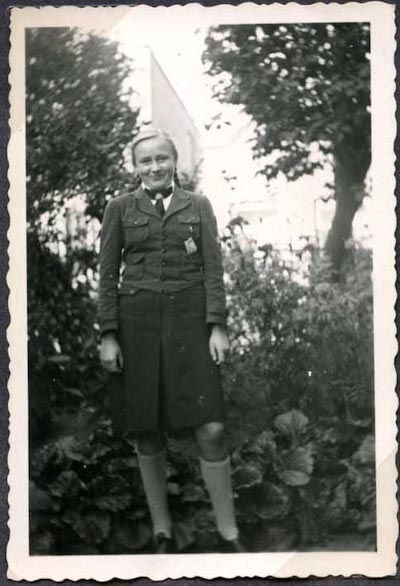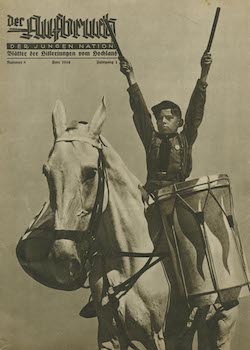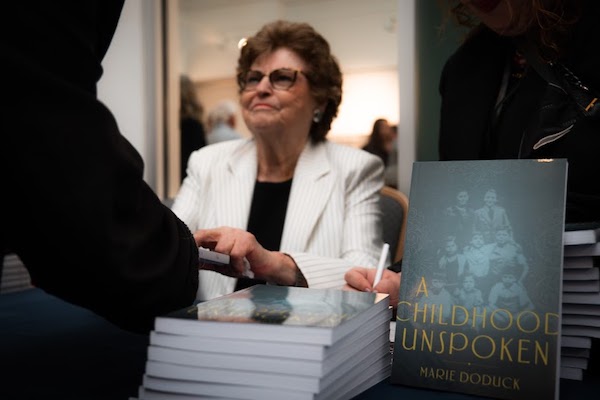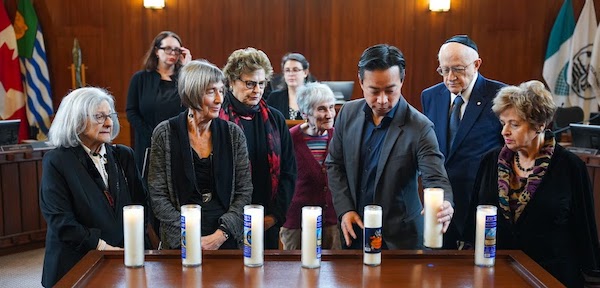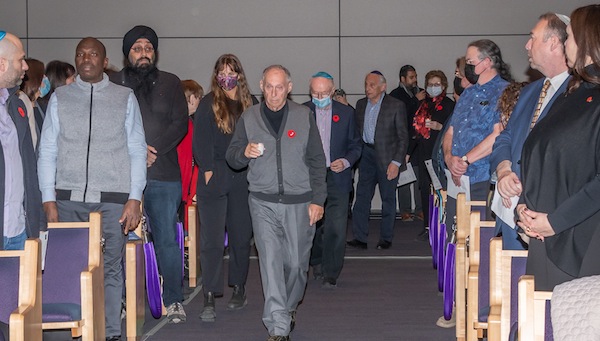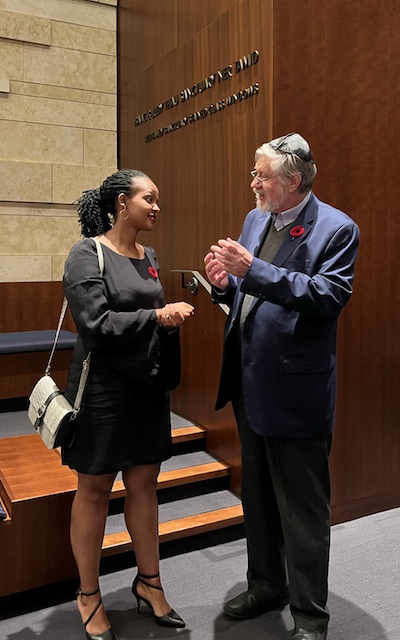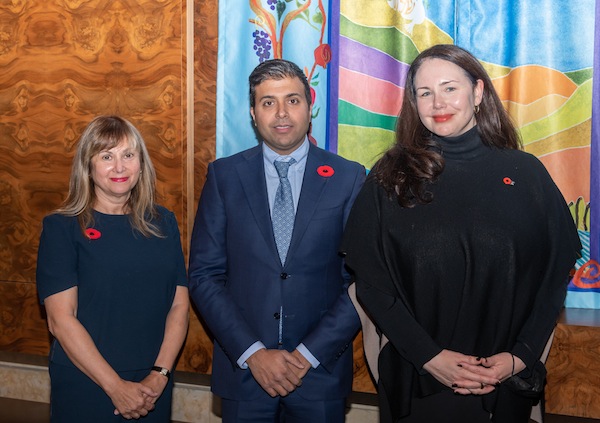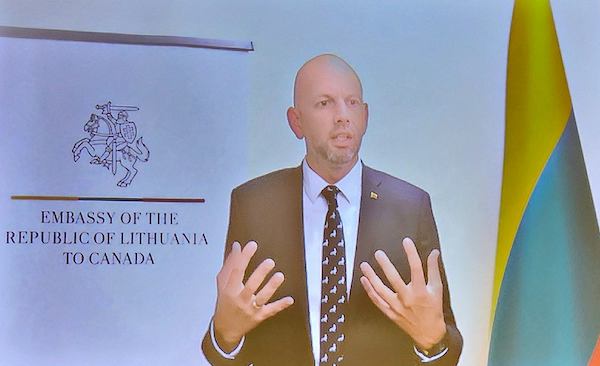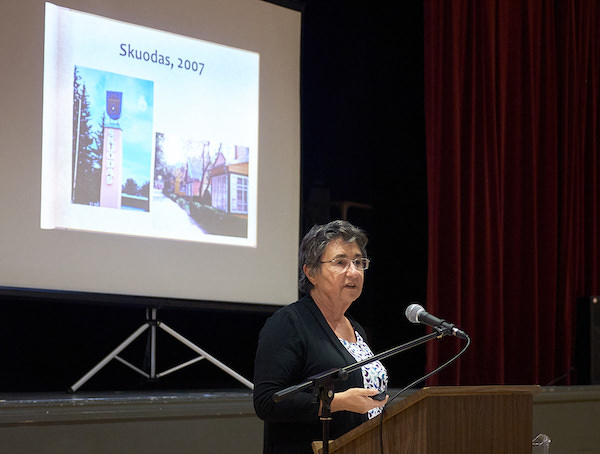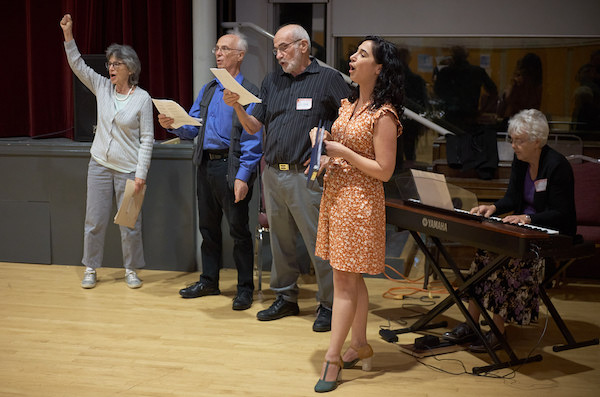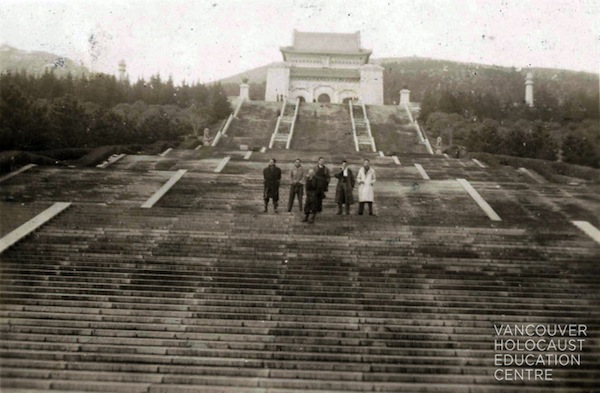Rabbi Dr. Eytan Cowen, his wife Rabbanit Caroline Sarah Bitton-Cowen and their family will take up the mantle of spiritual and rabbinic leadership at Congregation Beth Hamidrash. (photo from Beth Hamidrash)
Rabbi Dr. Eytan Cowen has agreed to become the next rabbi and spiritual leader of Congregation Beth Hamidrash and leader of the Vancouver Sephardi community.
The congregation is excited for Rabbi Cowen, his wife Rabbanit Caroline Sarah Bitton-Cowen and their family to join them and take up the mantle of spiritual and rabbinic leadership. The start date is yet to be determined, to best enable the family to navigate the challenges of moving to Vancouver from Toronto.
Cowen served as rabbi of Tiferet Israel Sephardic Congregation in Toronto from 2014 to 2017. He returned to his hometown, Toronto, from Indianapolis, where he served for two years as full-time rabbi of Etz Chaim Sephardic Congregation, a 100-year-old community.
Cowen pursued and completed his rabbinical studies at Rabbi Isaac Elchanan Theological Seminary of Yeshiva University and the Sephardic Rabbinical College of Rosh Kollel. In addition, he is a graduate of the University of Toronto with a double major in microbiology and Jewish studies, as well as four years of postgraduate study at the Canadian College of Naturopathic Medicine. He is a licensed naturopathic doctor, practising integrative medicine for the past 20 years, and endeavours to combine Torah and health.
Bitton-Cowen was born in Paris, France, with Sephardi heritage from Morocco and Tunisia. She is a graduate of Stern College and Sy Syms School of Business. She enjoys teaching others, sharing wisdom with women of the congregation, and is an accomplished certified professional accountant.
The rabbi and rabbanit are the proud parents of Eliyahu-Yaacov (23), Nissim-Nahum (21), Simcha-Mazal (20), Rivkah-Chaya (16), Efrayim-Menashe (13), Tehila-Adelle (9), Batsheva-Esther (6) and Batya-Emunah (4). They have one granddaughter, Sofia Adina (14 months).
* * *
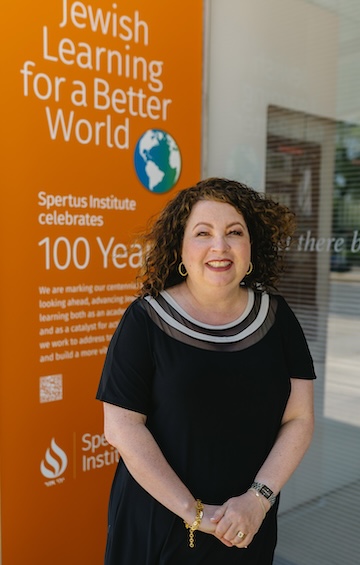
On May 5, Chicago-based Spertus Institute for Jewish Learning and Leadership awarded master’s degrees to 18 graduates who embody the vital Jewish tradition of learning, which grounds us in our history and equips us to face contemporary challenges.
Vancouver resident Alexis Doctor, director of member and guest services at the Jewish Community Centre of Greater Vancouver, is among this year’s graduates. She received a master of arts in Jewish professional studies, completing a creative leadership-building program designed to advance careers and strengthen the organizations students serve.
“It’s something I will take with me for the rest of my life – the program has given me fresh new ideas to take back to my team,” said Doctor. “This has been one of the most challenging things I’ve ever done, but it’s also one of the most rewarding.”
Spertus Institute, which was founded in 1924, is an institution of higher Jewish learning dedicated to real-world action. At its core are degree and certificate programs in which students engage with Jewish ideas in the service of personal growth, community leadership and professional advancement. These offerings, which merge theory and practice, educate Jewish professionals, community leaders and those who seek quality, reflection-driven scholarship. Those interested in becoming a future Spertus Institute graduate should visit spertus.edu for program and application information or contact assistant director of recruitment Amie Barrish at [email protected].
* * *
The Jewish Federation of Greater Vancouver’s 2023 annual campaign generated $10.3 million for the community, thanks to the generosity of some 2,500 donors.
As a result of this year’s $10.3 million total, Federation will be able to provide crucial stability to its more than 30 partner organizations by ensuring that they can count on funding that helps fuel their important front-line work. Plus, they will be able to access additional funding through grants for programs and services that deliver on the strategic priorities for the community.
An additional $1.25 million in funding directed to special projects was also raised, as was $20.4 million through Federation’s Israel Emergency Campaign (IEC).
In addition to addressing immediate needs after the Oct. 7 Hamas attack on Israel, the IEC allocation committee, chaired by Stephen Gaerber, is committed to addressing the medium- and long-term needs of Israelis who continue to be affected by the ongoing war and hostage situation.
* * *
The Vancouver Holocaust Education Centre has presented the 2024 Meyer and Gita Kron and Ruth Kron Sigal Award for Excellence in Holocaust Education to Ben Lane (Collingwood School) and Mike Wolthuizen (Rutland Senior Secondary School). Both have demonstrated exceptional commitment to Holocaust education throughout their careers and have significantly impacted their students, colleagues and school communities.
The Kron Sigal Award was established in memory of Meyer and Gita Kron and their daughter Ruth Kron Sigal, Lithuanian Jewish survivors of the Holocaust who re-established their lives in Vancouver. Through their lifelong involvement with education and community, the family touched the lives of thousands of students.
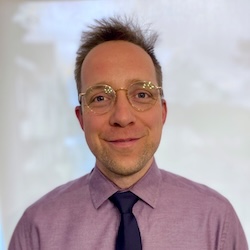
During his tenure at Collingwood School in West Vancouver, Lane led the development of a comprehensive Holocaust education program at the school. He created classroom resources and lesson plans and implemented school-wide events, commemorative programming and co-curricular opportunities for students, colleagues and the community to engage with the history of the Holocaust.
An alumnus of Yad Vashem’s International School for Holocaust Studies, Lane’s approach to Holocaust education demonstrates creativity, depth of knowledge in subject matter and pedagogical quality. This is reflected in his bespoke lesson plans and robust teaching materials, which combine engaging history lessons with innovative project-based learning. These allow students to navigate complex issues of antisemitism, genocide and the legacies of the Holocaust with accuracy, sensitivity and a sense of responsibility for the subject matter.
Exposing students to primary sources of Holocaust history has been a priority for Lane, and he regularly incorporates VHEC programs into his curriculum through exhibition tours, workshops and survivor outreach speaker engagements. As well, he has facilitated a co-curricular student group to participate in the Dora Love Prize, a Holocaust education program sponsored by the University of Essex. For the past three years, this student group has engaged with scholars and survivors internationally and produced innovative projects annually to raise awareness of the Holocaust and human rights.
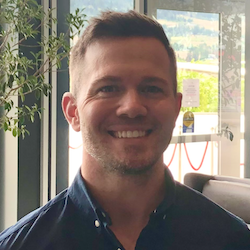
Wolthuizen teaches Genocide Studies 12 and Social Studies 10 at Rutland Senior Secondary School in Kelowna. He has been instrumental in advancing Holocaust education in the Central Okanagan School District, where he recently co-developed Holocaust 12: Beyond the Shoah, a social studies elective course to be introduced into classrooms in September 2024.
Colleagues, administrators and students attest to Wolthuizen’s thoughtful and innovative teaching approach, which creates a supportive environment for students to express their thoughts and critically analyze events in Holocaust history. He fosters meaningful discussions and ethical reflections on human choices. Through exposure to survivor testimony and primary sources, he cultivates in his students an appreciation for the stories of the individual. One student shared:
“Because of his teaching, one of my key takeaways from the course was the importance of the stories of individuals that were impacted by the Holocaust and other genocides, rather than just statistics. When learning from him, it became very evident that he cares so much about each individual and their rights, and that their stories hold an immense amount of power and importance when discussing the Holocaust.”
Also an alumnus of Yad Vashem’s International School, Wolthuizen has attended dozens of workshops and conferences, locally and internationally, to enhance his knowledge of Holocaust study. He has shared this knowledge and expertise beyond his own community, leading professional development programs and teaching in multiple school districts as a guest lecturer on Holocaust history.
* * *
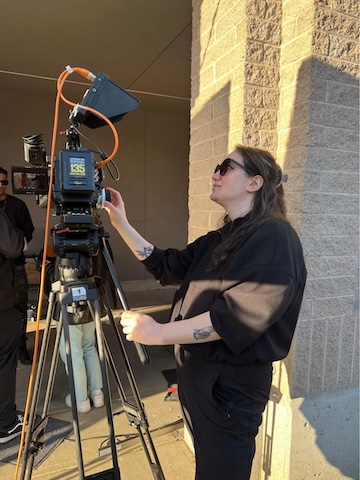
Becky Wosk is the recipient of the Edmonton Jewish Film Festival’s 2024 Earl Parker Award for Jewish Film. The $1,500 award will go towards Wosk’s production of a documentary on Jewish identity and how we are all connected.
Wosk is a directing student at Langara College in the film arts program. She has been immersed in the arts since a very young age and is a multidisciplinary artist and performer – her band Hollow Twin recently released a new LP on vinyl and digitally.
Wanting to gain more technical skills and hands-on experience in directing, to make music videos for her and other bands, as well as documentaries and shorts, Wosk applied to the Langara film program. It was her instructor who sent her the application to the Earl Parker award for a Jewish-related film project. Wosk’s pitch was One Thread.
One Thread is a documentary-style short that will be filmed in Vancouver. Interviewees will range from age 18 to 99+, including Holocaust survivors.
“I see this potentially becoming a series that can eventually be all tied together spanning globally to see how, regardless of where we live, our backgrounds, we are one people – a tribe of resilient humans who have overcome all odds to be here today. A look at the diversity of the diaspora and how we all have one common thread,” wrote Wosk in her submission. “The participants will not be limited by religious sect, as I want the overarching theme to be our DNA, not necessarily religion – but I would like to touch on customs and traditions within the interviews.”
Wosk is hoping to incorporate klezmer music and archival photos from various sources into the film. She will be putting a call out soon for interviewees of all ages, genders and backgrounds who identify as Jewish. The filming will take place this fall.

